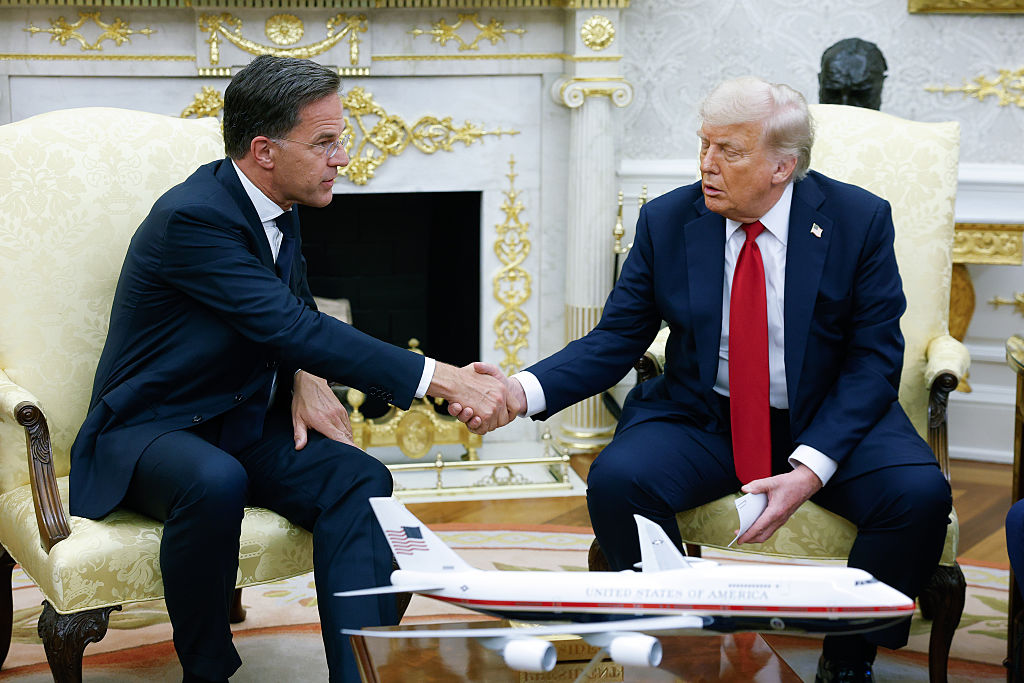President Donald J. Trump has often touted “major” statements. But this time he delivered. His announcement on Monday that he would send “top of the line” weapons to Ukraine and slap Russia with “severe” sanctions if it doesn’t agree to a ceasefire within 50 days marks a turnabout, especially for a man who only months earlier had bullied Ukrainian President Volodymyr Zelensky in the Oval Office.
[time-brightcove not-tgx=”true”]
Significantly, the move was jointly announced with NATO Secretary-General Mark Rutte, who was in the Oval Office with Trump. As usual, Trump did most of the talking, but Rutte was clearly on board and confirmed key details. In other words, this wasn’t a unilateral Trump move nor a matter of whim, but a coordinated transatlantic effort that follows the upbeat NATO summit in June that Rutte skilfully guided. That’s progress.
The package, at least as initially announced, has a lot: Patriot missiles and perhaps Patriot batteries, dispatched immediately, with Europeans paying for them; a regular flow of more U.S. weapons to Ukraine, coordinated with European governments and NATO, also with Europeans paying; and new economic pressure on Russia if there is no ceasefire, including secondary tariffs up to 100% on countries that buy Russian oil.
Many, myself included, would have preferred the U.S. share the costs of new weapons for Ukraine with the Europeans. Ukraine’s survival is in America’s interest, too. But it was only two weeks ago that the Pentagon paused weapons transfers to Ukraine. A full American abandonment of Ukraine seemed to be unfolding, and Trump’s decision up until Monday not to approve any new weapons for Kyiv was a big incentive for Vladimir Putin to keep up his maximal aims. He now says he’s “very, very unhappy” with Putin and has privately urged Zelensky to step up deep strikes inside Russia, the FT reported.
Critics of the package have argued that the 50-day deadline gives Russia time to keep pounding Ukraine. That’s an understandable reaction. But sending weapons to Ukraine now and threatening a new tranche of economic pressure against Russia to achieve a ceasefire and ultimately a deal to end the war—a Trump priority that Zelensky accepted and Putin scorned—could work as a one-two punch, if the sanctions truly bite.
Unfortunately, the new tranche of economic pressure doesn’t quite seem ready. The threat of 100% secondary tariffs alongside the bipartisan Graham-Blumenthal sanctions bill that targets Russian oil sales are the right targets. But tariffs of 100% or 500% against countries that buy a lot of Russian oil, including China and India, might not be practical given the complex web of trade and tariff dealmaking with these countries. The Graham-Blumenthal bill, still making its way through Congress, could be made more workable by offering a waiver if countries kept “significantly” reducing oil purchases. That was an approach that yielded results with Iran during the Obama Administration.
Still, this is Trump’s most forceful backing of Ukraine yet, and Zelensky is now reshuffling his government with an eye toward strong cooperation with Washington.
Trump’s U-Turn seems partly the result of European leaders, Rutte especially, who worked hard to develop common ground with the U.S. President. It also seems to be the result of growing irritation with Putin. Trump said Monday that Putin talks “so beautifully” when it comes to a ceasefire but “then he’ll bomb people at night. We don’t like that.”
Recent U.S. Presidents, like Trump, have courted better ties with Putin. But all failed because the Russian President’s terms always turned out to be the U.S. giving him a free hand for oppression at home and aggression against his neighbors—especially Georgia and Ukraine—that Putin treated as mere provinces of a restored Russian Empire. Neither George W. Bush nor Obama, both of whom I worked for while in government, would accept those terms.
Six months into Trump’s second term, the U.S. and Europe finally seem to be getting on the same page when it comes to Ukraine. Russia’s economy is vulnerable. Its war casualties are enormous, all with minimal advances on the ground. Putin’s arrogance in wanting total Ukrainian surrender could prove his downfall, if only Trump sticks to his position.

